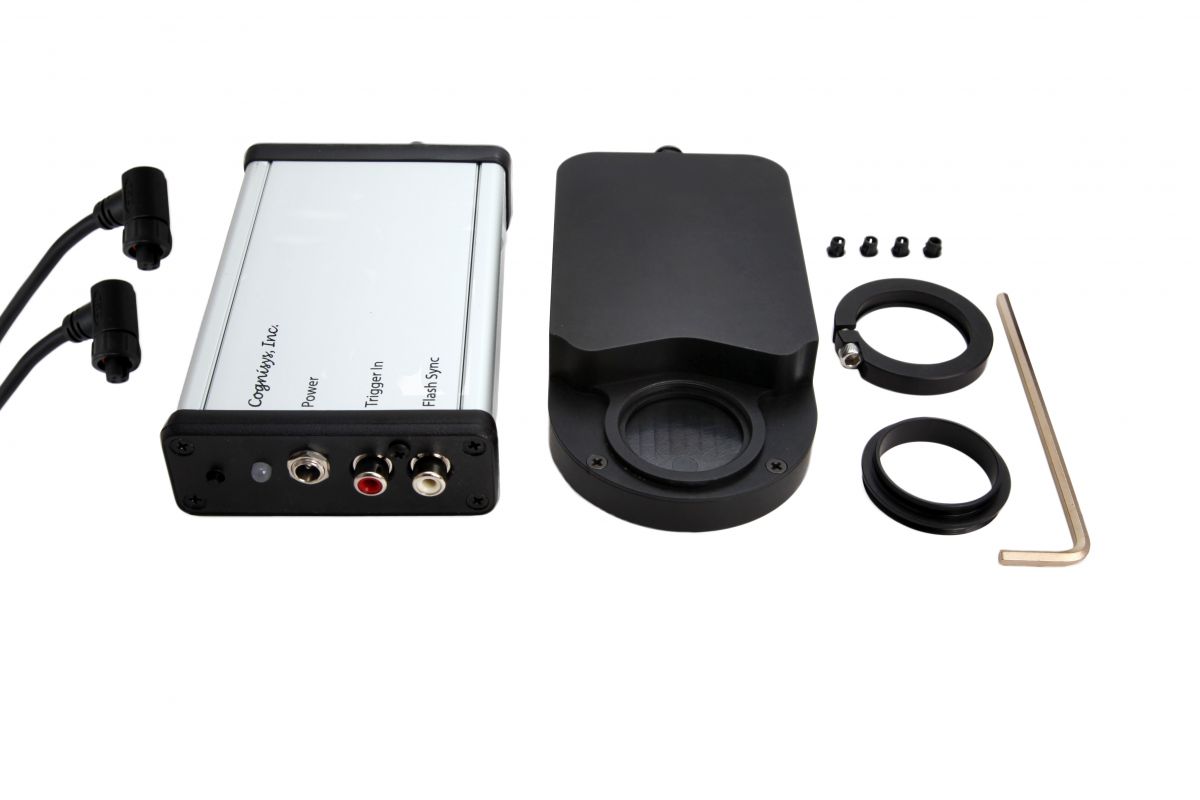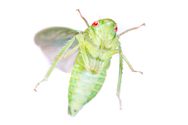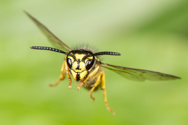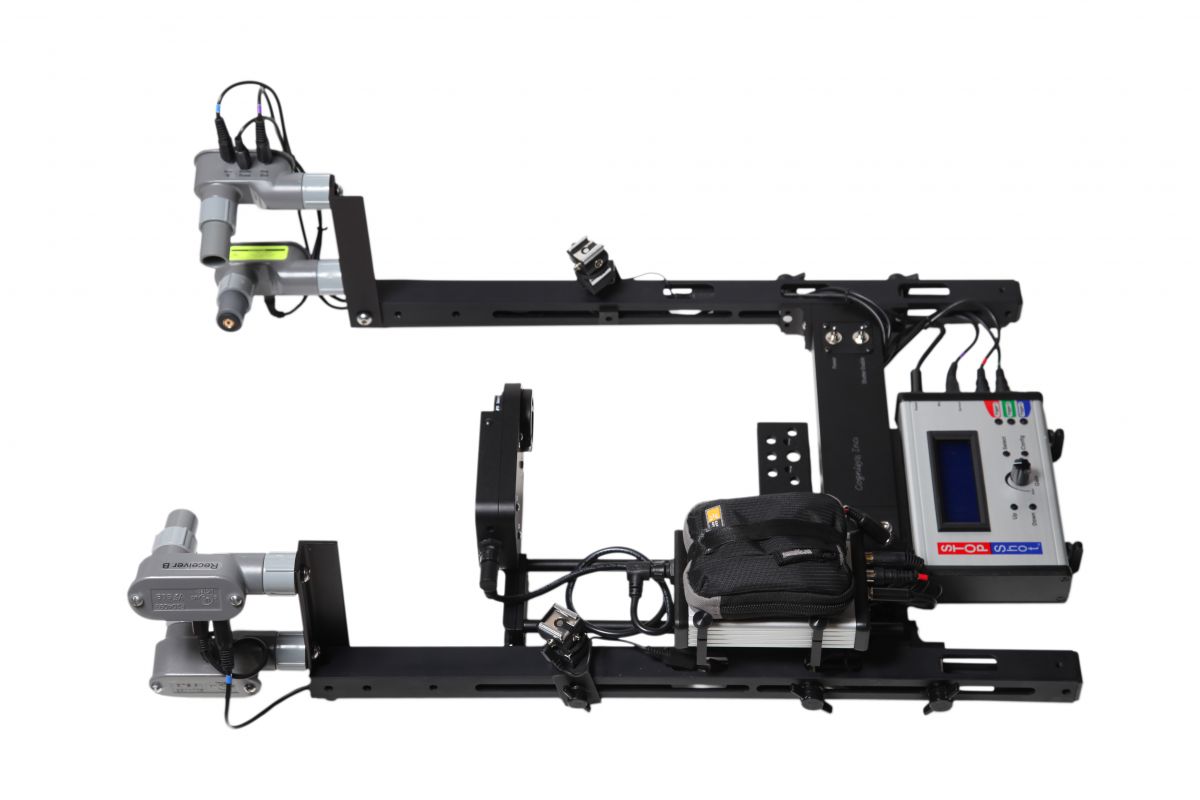High Speed Shutter System
The High Speed Shutter will reduce the shutter lag of your DSLR system to a blazing fast 5.8 mS. Having a fast shutter response time is critical when trying to capture fast subjects with irregular flight paths like insects. If you can imagine how little time a flying insect is in your field of view when you are shooting a 1:1 macro shot of an insect in flight it becomes easy to understand why system response time is so important. The camera shutter is left open - generally in bulb mode - and the high speed shutter is mounted to the front of the lens. The camera, high speed shutter, sensors and flashes are then coordinated by a high speed controller like StopShot.
The high speed shutter system includes the following:
1 x High Speed Shutter Controller
1 x High Speed Shutter
1 x Interconnect cable between shutter and controller 0.4m
1 x 37mm Camera Filter Threaded Adapter Ring
1 x Ring Clamp
1 x 9/64 Allen Key for the Ring Clamp
4 x 1/4-20 dust covers for mounting holes
Cognisys High Speed Shutter
Why Use a High Speed Shutter
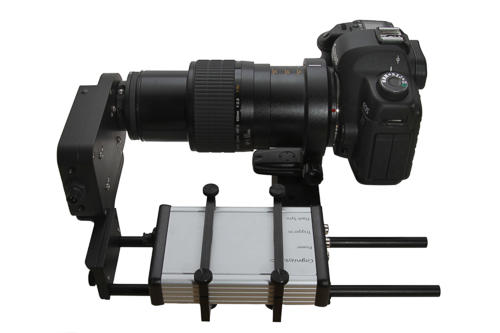
Most often high speed photography is done in a darkened room, the camera is in bulb mode with the camera shutter held open and a short duration of light from a high speed flash is used to expose the photograph. There are two significant reasons for shooting this way. The first is that a flash has a much shorter duration than your camera shutter is capable of. This allows you to freeze fast motion with less blur. The second reason is shutter lag. While flashes respond instantaneously to a trigger, cameras do not. If you try to trigger your camera to capture a high speed event it is very often the case that by the time the camera gets around to taking the image the event you were trying to photograph is over or out of frame. A good example of this is photographing insects in flight. The higher the magnification the smaller the field of view the more severe the issue. The high speed shutter offers a solution to the shutter lag problem.
If you have ever tried to capture a macro shot of an insect in flight you have probably fought against shutter lag. Shutter lag is the amount of time it takes between pushing the shutter button on your camera and when the camera actually captures the image. Modern DSLR cameras have a shutter lag between 35 and 300mS. This is way too long if you are trying to capture a close up shot of an insect in flight, by the time your camera gets around to taking the image your subject has moved out of frame. Enter the Cognisys High Speed Shutter. This shutter has less than a 6mS response time. It will allow you to capture even the fastest events without your subject moving out of frame.
When using the high speed shutter it is important to understand that it is used to get around the slow response time of the camera and improve the x-sync speed of the camera. The high speed shutter has an effective open time (x-sync speed) of about 1/300, most modern DSLRs have an x-sync speed of 1/200 or 1/250 best case. When using the high speed shutter it is important that your scene be completely illuminated by flash. When working in bright ambient light you will need to stop down significantly and use a low ISO to minimize the effect of the ambient light. The brighter the ambient light the more likely you are to see ghosting in your image. The reason for using the flash to freeze the motion is that you can achieve an effective shutter speed much faster than is possible with the camera shutter alone. The key to being able to illuminate your entire scene with flash is that camera sensor must be completely exposed all at once (with as fast an x-sync speed as possible). If the ambient light is too bright you may be better off using the fastest shutter speed your camera can deliver (usually around 1/8000) - the downside of this approach is the shutter lag is long and often the insect has left the frame by the time camera captures the image. 1/8000 s is often not fast enough to stop the wings of an insect in flight and is generally the max shutter speed that can used by the camera. It is all a trade off - the high speed shutter is another tool to give you more options.
Shown above is an image of the High Speed Shutter mounted to a 65mm MP E-65 macro lens extended to 2X. The shutter and controller are mounted on our Shutter Support System This whole assembly can be mounted on a tripod or on our Insect Rig.
High Speed Shutter Features
- Ultra Fast 5.8mS response time (time from trigger to full open).
- 30 mm open diameter
- Runs on 12VDC so it can be battery powered for field use.
- One Li-Ion Battery Kit will power the high speed shutter, StopShot and the necessary sensors.
- Adjustable Open time - Open time is fully programmable via StopShot for longer exposures
- Status LED indicates state of shutter - Charging, Ready and Error
- Warranted for 40,000 cycles, it can be rebuilt after wear out. The shutter and motor are the only moving parts.
- Housing constructed from anodized aluminum with stainless steel fasteners
- Button to hold open shutter for focusing and setup.
- Allows high speed photography in the light of day - See Joe McDonald's Rattlesnake Image below.
- Attaches to 37 mm filter threads. Adapters readily available for most lens thread sizes.
- High speed shutter controller has flash sync port for easy connection.
- Integrated Threads for 34 mm Screw on UV filter to keep debris (and insects) out of shutter.
Specifications and Dimensions
- Shutter dimensions: 135 mm(L) x 70 mm(W) x 27 mm(H)
- Optical Path Dimensions: 30 mm diameter x 23 mm long. Click here for more information on vignetting
- Shutter Weight: 500 g
- Controller Dimensions: 78 mm(L) x 135 mm(W) x 28 mm(H)
- Controller Weight: 285 g
- Length of cable between shutter and controller 0.45 m (18 in)
- Operating Voltage: 10 to 16VDC
- Current Consumption: 2ADC pk
- Time from Trigger to full open: 5.8mS
- Exposure Time: Configurable with StopShot
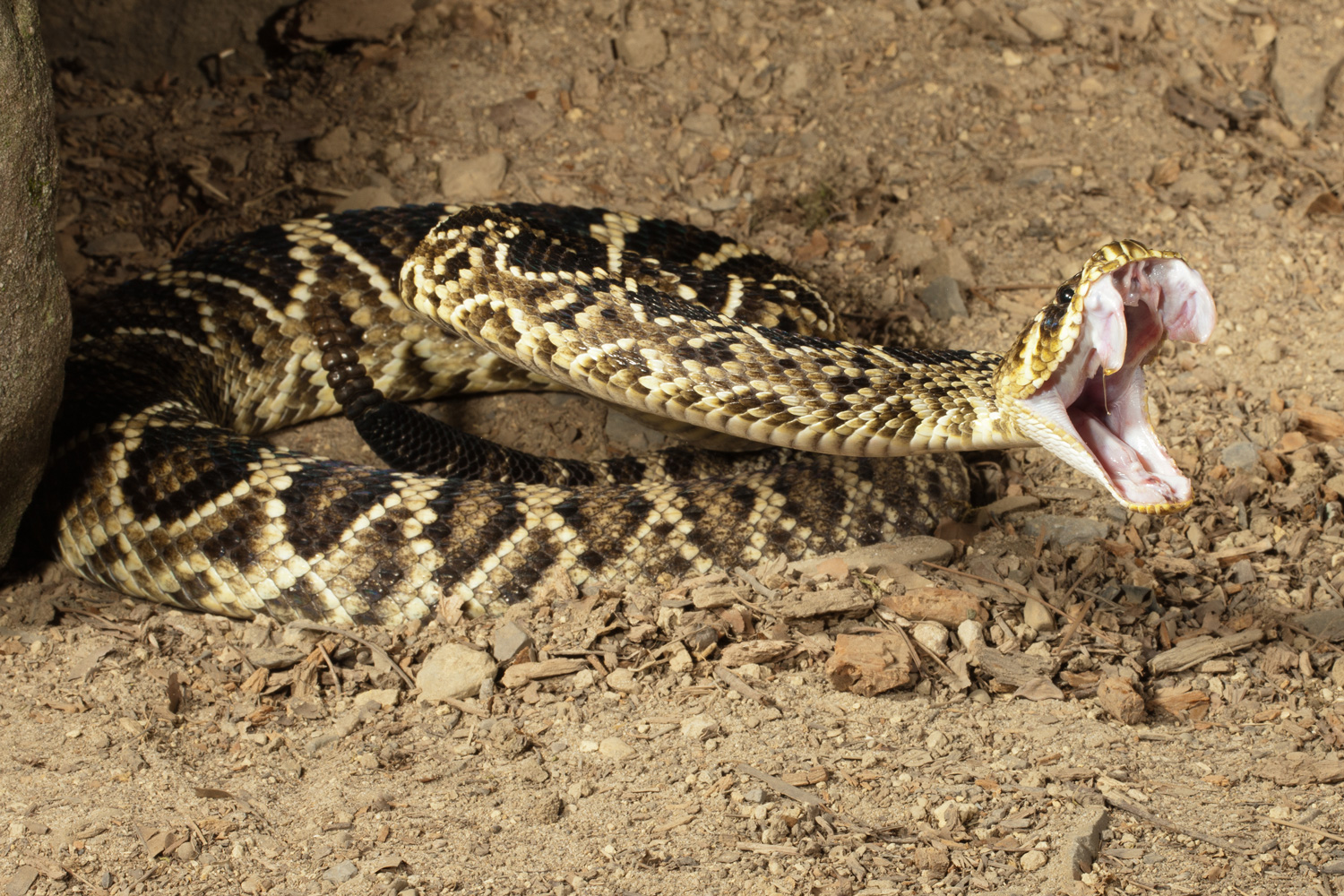
DON'T TRY THIS AT HOME!
Eastern Diamond Back Rattlesnake Strike
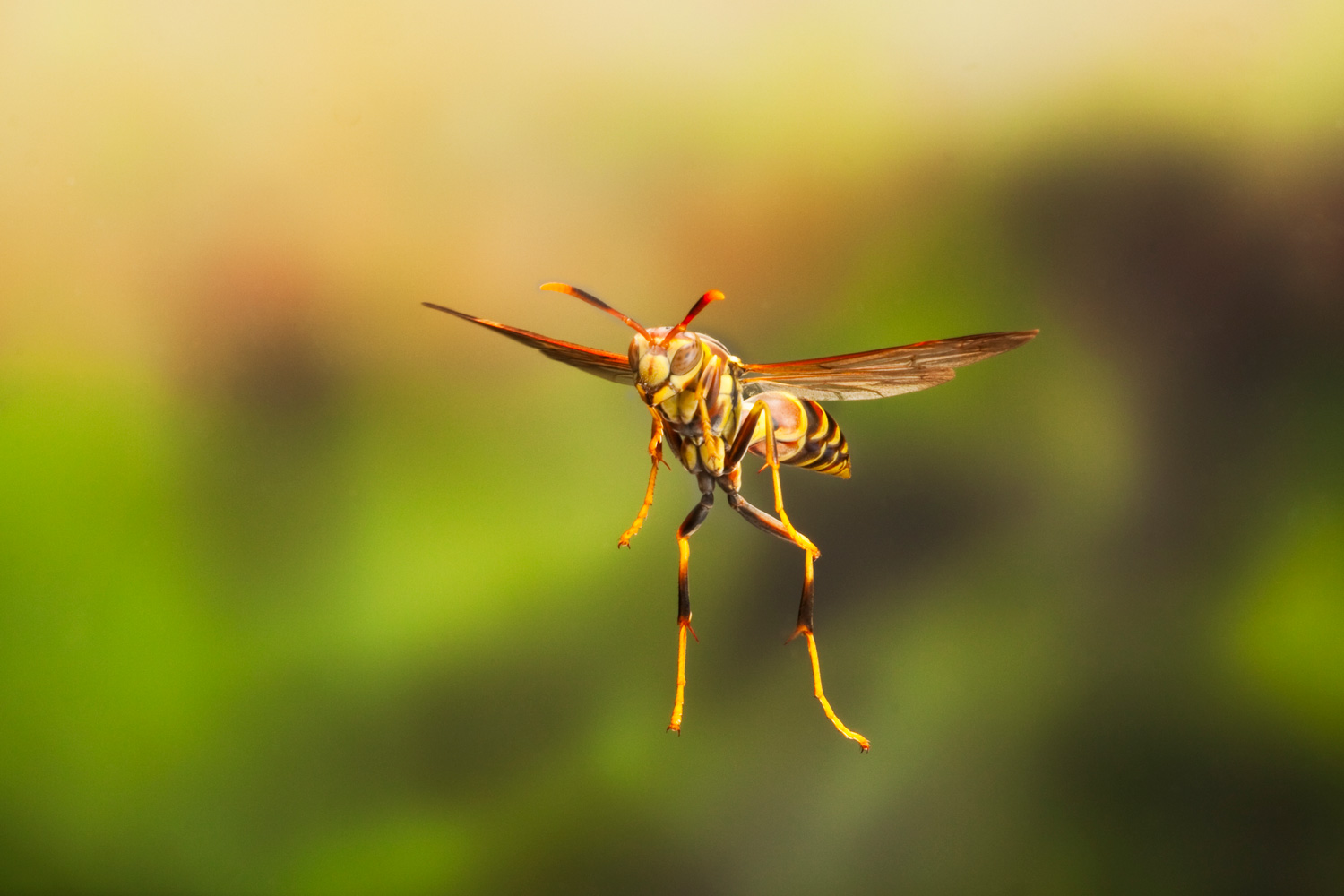
Wasp in Flight Captured with the High Speed Shutter
Shutter Mounting and Filter Details
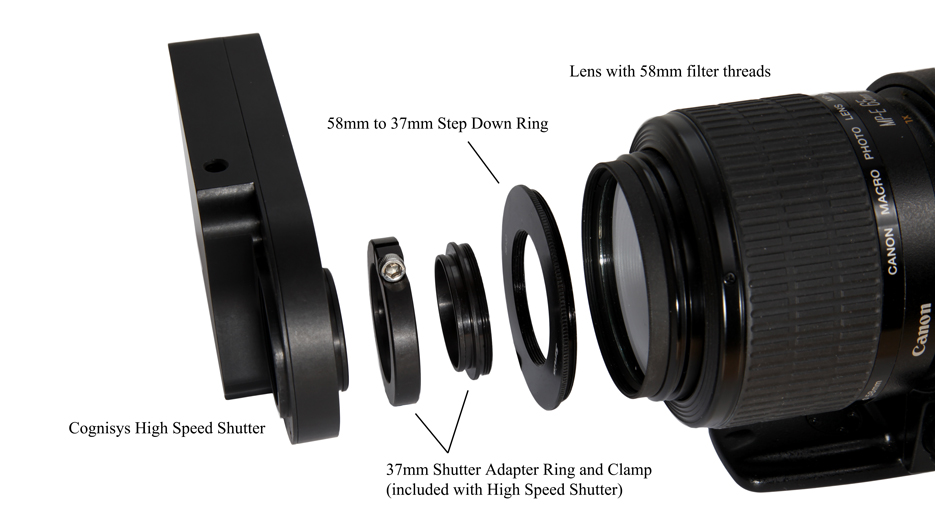
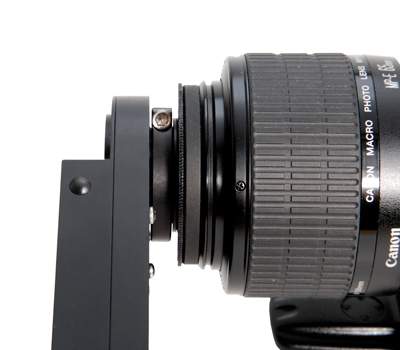
The High Speed Shutter is attached to the lens with the supplied lens adapter that has 37 mm x 0.5 mm threads on it. You can see the pieces required to mount it in the diagram above. The step down ring is not included and will need to be sized to the lens you are planning to attach the shutter to. We stock all of the common sizes and even some uncommon sizes.
To the left you can see how it looks all put together. The distance from the lens to the end of the shutter is 23 mm. The clamp can be tightened to the point that no rotation is possible between the shutter and the adapter ring or it can be left just loose enough to allow rotation.
The High Speed Shutter has 34 mm x 0.5 mm filter threads for a clear UV filter. The filter keeps insects and other debris out of the shutter. If you use lights to attract insects having this filter is highly recommended.
The shutter weighs about 500 g so you may want to support the shutter with an external bracket if you plan on carrying the shutter around. We have a tripod mountable Shutter Support System for this purpose. The 1/4-20 threaded holes are provided to mount the shutter to the support system. There are also 2 mounting holes in the back of the shutter as well. The dust caps shown in the picture are included.
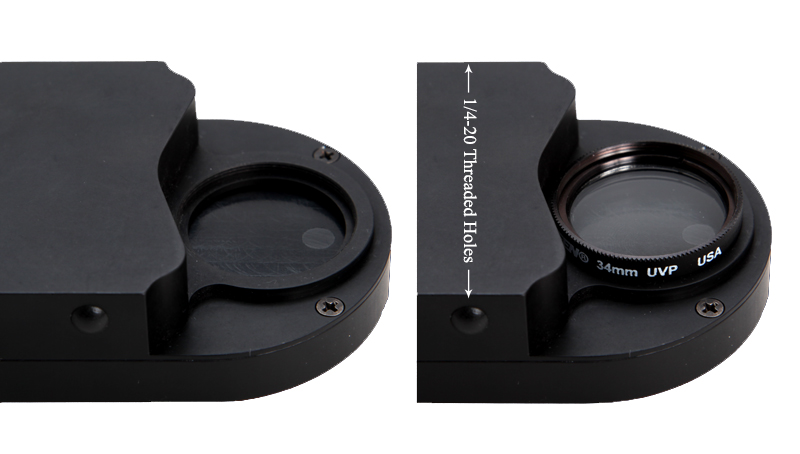
Controller Interface

The image on the left shows the shutter controller interface. Tap the button to hold open the shutter so you can focus your camera and align your sensors. Tap it again to close the shutter and the shutter is ready to fire. Press and hold to activate at full speed (exposure check with your flash).
Moving right there is a Bi-color LED to indicate when the shutter is ready to fire.
Next is the power jack, The shutter runs from low voltage DC ((12 to 16VDC). This allows the shutter to be powered up by battery. A single Li-Ion battery will run both the shutter and StopShot.
The next two connectors are for Trigger In and Flash sync. Connect the trigger input to StopShot and the flash Sync to your flash system.
Using the High Speed Shutter to Capture Insects in Flight
As shown below the High Speed Shutter is mounted on the end of the camera lens to be used. It is then necessary to coordinate the insects position, the camera shutter, the high speed shutter and the flash to capture a successful image. Fortunately StopShot (our high speed controller) is capable of keeping all of this in order. In keeping with our insect in flight example above the sequence of events that needs to happen is described below. For this example StopShot will need to be connected to a cross beam sensor to detect the object (it will be our trigger). Here is the high level process that needs to happen to capture an image:
1. The camera shutter needs to be held open (and refreshed every so often to prevent digital noise).
2. Open the external shutter when the subject is detected by the StopShot Cross Beam Sensor.
3. Fire the flash to expose the image after the high speed shutter has opened.
4. Once the flash has been fired the high speed shutter will close
5. After the high speed shutter closes the camera shutter will close and refresh the camera frame to be ready for the next event.
Visit here for a complete walk through of programming StopShot to use with the high speed shutter.
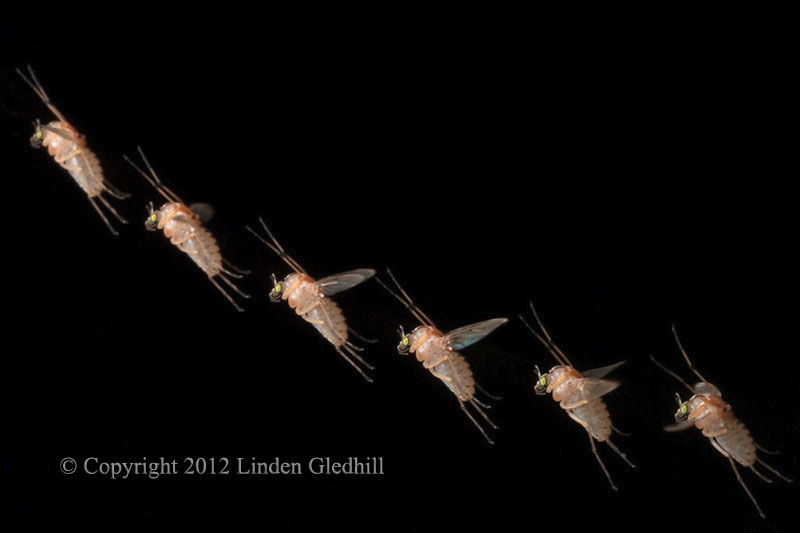
The image above was captured by Linden Gledhill using the Cognisys High Speed Shutter System. To capture this image Linden used the long exposure feature of the shutter and the strobe mode on his flash. This image was captured on a single frame using the flash to make multiple exposures of the insect at different moments in time. The shutter open time can be controlled by StopShot allowing for this type of work. Notice the different position of the wings in each frame.
Top Customer Questions and Answers (FAQ)
| Specifications | MIN | NOM | MAX | UNITS |
| Input Voltage | 10 | 14.8 | 16.8 | Vdc |
| Input Current(Charging) | - | 2000 | - | mAdc |
| Input Current (non-charging) | - | 30 | - | mAdc |
| Shutter Open Time (Sync time) | - | 5.8 | - | ms |
| Shutter full cycle time | - | 16 | - | ms |
| Output Current Sink(Flash sync) | - | - | 1 | Adc |
| Max Voltage on Flash Sync Port (Steady State) | - | - | 40 | VDC |
| Operating Temperature | 5 | 25 | 60 | C |
| Weight (shutter) | - | 500 | - | g |
| Weight (controller) | - | 285 | - | g |
| Open Diameter | - | 30 | - | mm |
| Shutter Life | 40,000 | - | - | Cycles |
| Filter threads | - | 34x0.5 | - | mm |
| Adapter Ring threads | - | 37x0.5 | - | mm |

